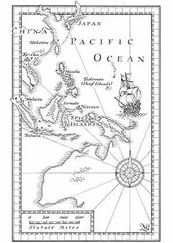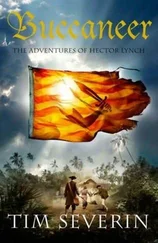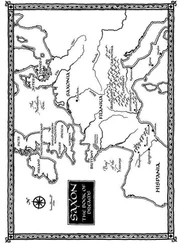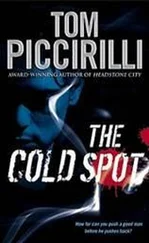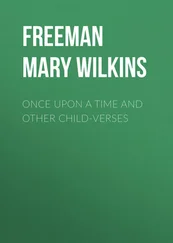A short walk from the monastery was a small stone-built chapel, sheltering in a wood. No one knew who had built it there or why. The monks at St Ciaran's denied any knowledge of its origins. The place was nothing to do with them, and they never went there. The little chapel was abandoned and falling into disrepair and housed, as we discovered, a hidden attraction. Which novice first found the lewd sculpture, I do not know. It must have been someone with remarkably sharp eyesight, for the carved stone was tucked away among the stones forming the entry to the chapel, and under normal circumstances it would have been invisible. Whoever found the carving mentioned it to his friends and they in turn passed on the knowledge to other students, so that it became a sort of talisman. We called the stone the Sex Hag, and most of us, at some stage, crept down to the chapel to gaze at it. The carving was as grotesque as any of the strange and leering beasts which appeared in our illuminations. It showed a older and naked woman, with three pendulous breasts sagging from a rugged rib-cage. She was seated with her legs apart and knees open, facing the observer. With her hands she was pulling apart the lips of her private entry and on her face was a seraphic smile. The effect was both erotic and demonic.
Of course, there was a good deal of salacious talk inspired by the Sex Hag's revelations, but for the most part it was ignorant speculation as we had few occasions to meet any women. Indeed the frightening posture of the Sex Hag acted as a deterrent. Several of the novices were so disturbed and repelled by the graphic quality of the carving that I doubt they ever touched a woman thereafter.
The same cannot be said for me. I was intensely curious about the opposite sex and spent a good deal of time trying to devise a way of striking up an acquaintance with a female of my own age. This was well-nigh impossible. Our community was all male, and our only regular women visitors were those who came from the nearby settlement to visit the infirmary or to offer prayers at the various oratories. Unfortunately they seldom included anyone who was youthful and nubile. Sometimes a young and unmarried woman was glimpsed among the pilgrims who came to St Ciaran's shrine, and we younger monks would gaze in fascination, telling ourselves there was nothing wrong in our curiosity because the temptation was only momentary as the pilgrims would linger just a few hours, then vanish out of our lives for ever.
It was Brother Ailbe the librarian who, unwittingly, provided me with the long-desired chance to meet a female of my own age. Our keeper of books was so solicitous about the well-being of the precious volumes that he wrapped all the important books in lengths of linen, then stored them in individual leather satchels to protect them from harm. One day he decided that the satchel which contained St Ciaran's own copy of the Bible — the same book which had been paraded before Donnachad on the day I was handed over to the monastery as a slave — needed attention. For any other book in his library Brother Ailbe would have ordered a replacement satchel from the best leather-worker in the town, sending a note with the necessary dimensions of the volume and waiting for the finished satchel to be delivered. But in this case the existing satchel was something very special. It was claimed that St Ciaran himself had sewn the satchel. So there was no question of throwing it away and ordering a new one. Yet the existing satchel was so shabby that it did no honour to the saint's memory, and there was an ugly rip in the leather that cut right across the faint marks which, it was said, were the fingerprints of the saint himself.
Brother Ailbe decided to entrust the repair to a craftsman living in the town, a man by the name of Bladnach, who was a master of the long blind stitch. In this technique the needle, instead of passing straight through the leather, is turned and runs along within the thickness of the skin to emerge some distance away from where it entered so that the thread itself is invisible. But using a long blind stitch on old and brittle leather is a risk. There is only one opportunity to run the needle in. There can be no second chance, no withdrawing the point and trying again, as this destroys the original substance. Yet this is how Brother Ailbe wanted St Ciaran's satchel to be mended so that it would appear to the uneducated eye that the satchel had never been damaged. Bladnach was the only craftsman capable of the work.
Bladnach was a cripple. Born without the full use of his legs, he moved about his workroom on his knuckles, though with remarkable agility. This way of motion had, of course, developed the strength and thickness of his arms and shoulders to an extraordinary degree, and this- was no disadvantage for a man who needs all his power to drive a needle through heavy, stiff leather. But Bladnach's disability also meant that it was more logical for Brother Ailbe to bring the damaged book satchel to Bladnach's workshop than for Bladnach to be carried to the monastery each day to make the repairs. Yet St Ciaran's bible satchel was so precious that Ailbe could not possibly leave it unguarded. The librarian's solution was to ask Abb Aidan for permission for someone from the monastery to accompany the satchel to Bladnach's workshop and stay with it until the repair was done. By that time I was a familiar figure in the library, reading my texts, and Brother Ailbe suggested that I would make a suitable envoy. Abb Aidan agreed and stipulated that I was not to live in the leather-worker's house but to live, eat and sleep within the workshop itself, not allowing the satchel out of my sight.
Neither our abb nor our librarian were aware that when it comes to the sewing of the very finest leather, the most elegant stitching of delicate lambskin or the threading of a single twist of flax so fine that you cannot use a needle to insert it but make the merest pinprick of a hole, the work is almost invariably done by a woman. In the case of Bladnach the work was done by his daughter, Orlaith.
How can I describe Orlaith? Even after all these years I feel a slight tightening sensation in my throat as I remember her. She was sixteen and as fine-boned and delicately formed as any woman I have ever seen. Her face was of the most exquisite shape, where delicate cheekbones emphasised the slight hollows of the cheeks themselves and the gentle sweep of her jaw led to a small and perfect chin. She had a short, straight nose, a flawless mouth and the most enormous dark brown eyes. Her hair was chestnut, yet you could mistake it for being black, and it made an almost unreal contrast with her pale skin. By any standards she was a truly beautiful woman, and she took meticulous care with her appearance. I never saw her with a hair out of place or wearing a garment that was not perfectly cleaned and pressed and selected for its colours. But the strangest thing of all is that, when I first laid eyes on her, I did not think her beautiful. I was shown into her father's workshop, where she sat at her bench stitching a woman's belt, and I barely gave her a second glance. I utterly failed to appreciate her stunning beauty. She seemed almost ordinary. Yet within a day I was captivated by her. There was something about the fragile grace in the curve of her forearm as she leaned forward to take up a thread of flax, or the flowing subtlety of her body as she rose to her feet and walked across the room, which had me in thrall. She stepped as delicately as a fawn.
She was in the early bloom of her womanhood and responsive to my admiration. She was also, as I later understood, in despair for a private reason and that made her all the more alert to the chance of happiness. There was little that either of us could do during those first few days to progress our feelings. It took her father a week to mend the precious satchel, most of the time being spent applying coat after coat of warmed wool grease to soften and restore the desiccated leather. There was nothing for me to do but sit in the workroom, watching father and daughter at their work, trying to make myself useful in small ways. When Orlaith left the room for any reason, the room seemed to lose its colour and turn lifeless, and I would ache for her return just to be close to her, sensing her presence so powerfully that it was almost as if we were in physical contact. Two or three times we managed to speak to one another, awkward, shy words, each of us stumbling and mumbling, sentences fading away and left unfinished, both of us fearful of making a mistake. But these stilted conversations were only possible when Bladnach was out of the room, which happened rarely as it was a great effort for him to swing on his knuckles, hauling his useless lower limbs as he left the workshop to go to relieve himself. All three of us took our meals together, Orlaith fetching the food from her mother's cooking fire. We would sit in the workroom, eating in quiet, shared company, and I am sure that Bladnach was alert to what was happening between his daughter and myself, but he chose to ignore it. I suspect that he too wanted his daughter to have some happiness in her life. With his own disability he knew how to value any small chance that occurred.
Читать дальше

